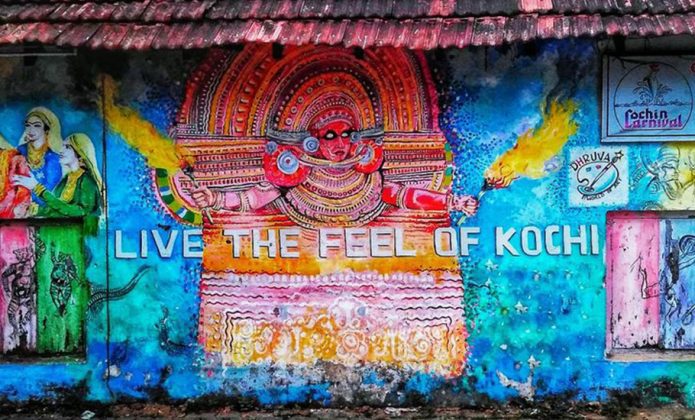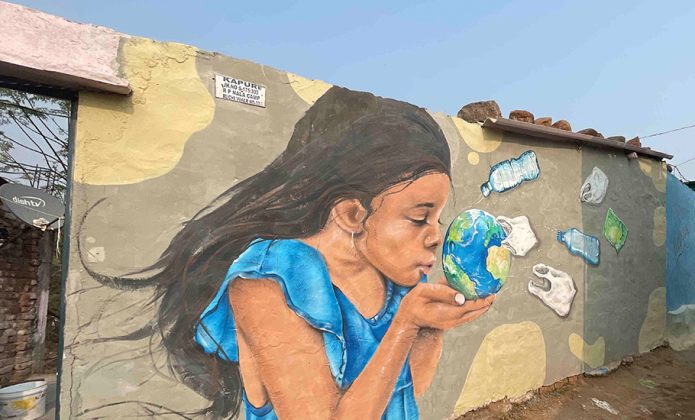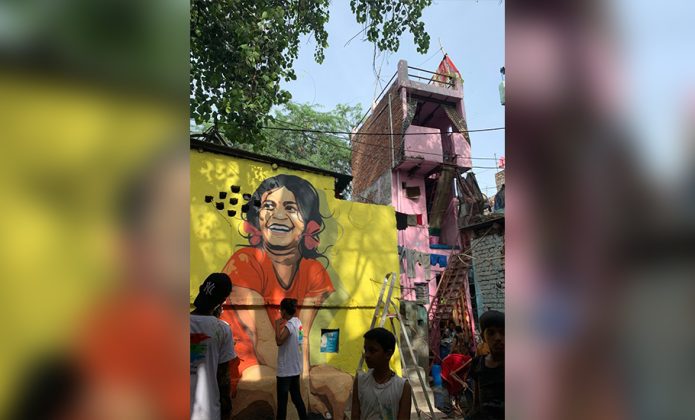
- Home
- News
- Analysis
- States
- Perspective
- Videos
- Education
- Entertainment
- Elections
- World Cup 2023
- Features
- Health
- Business
- Series
- Economy Series
- Earth Day
- Kashmir’s Frozen Turbulence
- India@75
- The legend of Ramjanmabhoomi
- Liberalisation@30
- How to tame a dragon
- Celebrating biodiversity
- Farm Matters
- 50 days of solitude
- Bringing Migrants Home
- Budget 2020
- Jharkhand Votes
- The Federal Investigates
- The Federal Impact
- Vanishing Sand
- Gandhi @ 150
- Andhra Today
- Field report
- Operation Gulmarg
- Pandemic @1 Mn in India
- The Federal Year-End
- The Zero Year
- Premium
- Science
- Brand studio
- Home
- NewsNews
- Analysis
- StatesStates
- PerspectivePerspective
- VideosVideos
- Entertainment
- ElectionsElections
- Sports
- Loading...
Sports - Features
- BusinessBusiness
- Premium
- Loading...
Premium
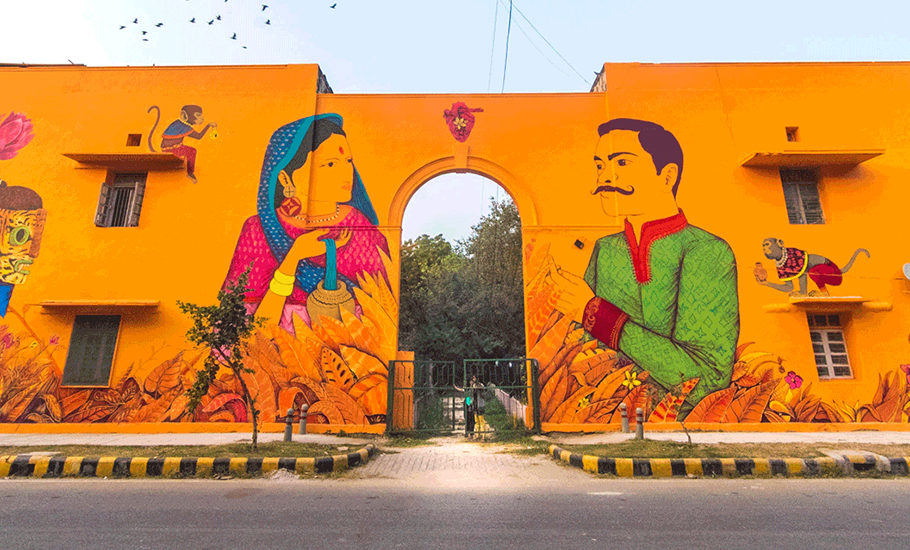
The evocative imagery of India’s vibrant street art movement

Commemorating two decades of UK-based street artist Banksy — probably the biggest name in the world in the genre of graffiti and public art — Artsy, the leading marketplace for art by the world’s emerging and established artists, said in an Instagram post: “Twenty years ago, on a whitewashed storefront wall in Shoreditch, London, the anonymous street artist Banksy stencilled out a...
Commemorating two decades of UK-based street artist Banksy — probably the biggest name in the world in the genre of graffiti and public art — Artsy, the leading marketplace for art by the world’s emerging and established artists, said in an Instagram post: “Twenty years ago, on a whitewashed storefront wall in Shoreditch, London, the anonymous street artist Banksy stencilled out a spare, innocent image: a young girl, windswept and monochrome, reaching for a bright red, heart-shaped balloon. At the time, Banksy was still far from a household name. He was a niche artist, beloved among the taggers of the Bristol underground and increasingly notorious for the cheeky large-scale murals he produced across Bristol and London. Two decades on, he is a (still anonymous) global superstar, and that simple Shoreditch stencil has become one of the most indelible images of the 21st century.”
Banksy’s ‘Girl with a Balloon’, became an icon of 21st-century art. It defined the larger movement that became known as ‘street art’. It became more than an evocative image—today, it has come to stand for social inequality and lost innocence. And that is what street art in short is all about. It aims to shock, question, titillate, sometimes all at once. It draws within its wide realm the ability to comment on socio-political issues of the day.
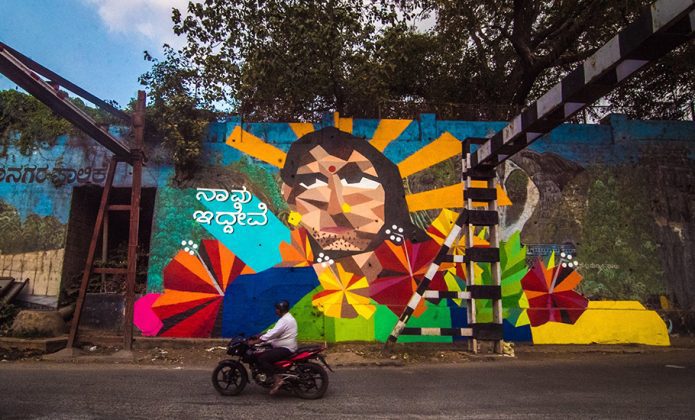
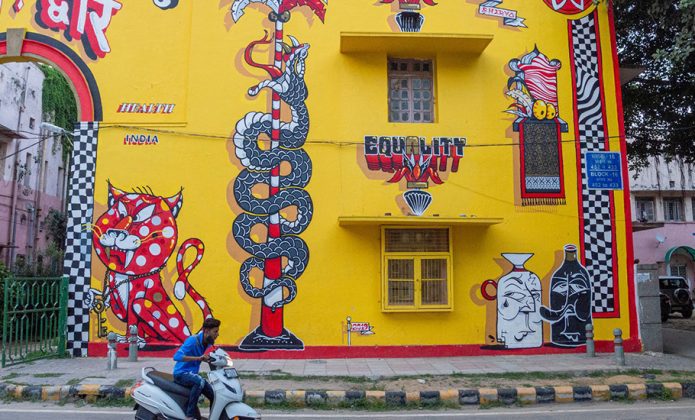
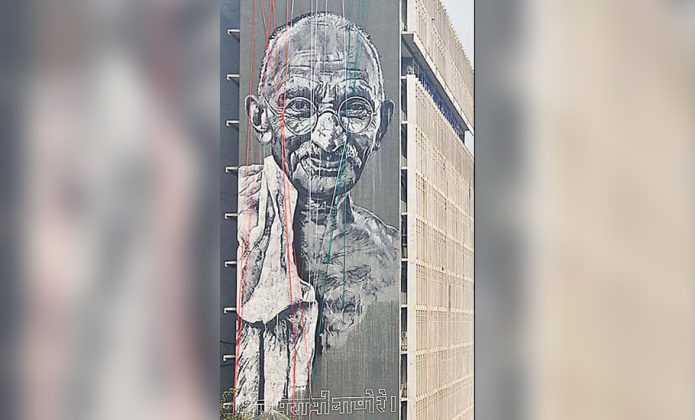
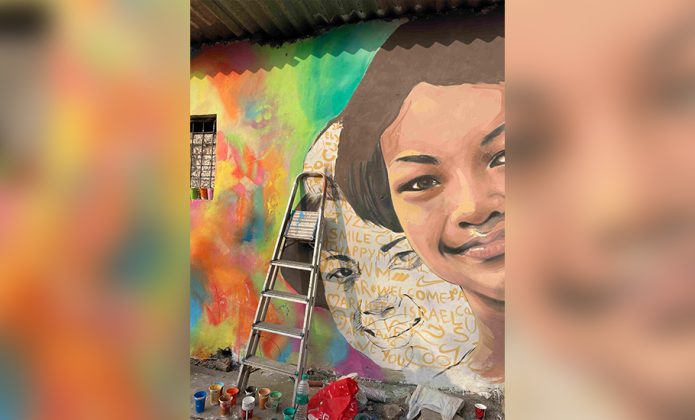
In the last few years, the street art movement in India has only grown from strength to strength. What started largely as graffiti, in some instances dubbed as vandalism of public property, has today become an epitome of rebellion and also something that aims to bring social change one painted block at a time. It forces one to stop and look, and look again, and ask questions and seek answers. It also enables reclaiming public spaces.
Street art: what and why
Street art originated in New York City in the 1970s. It arrived in India with the Street Art Festival in Delhi, in 2013. Many of the artists have pseudonyms, thanks to the social and legal ramifications of their controversial artistic statements, especially in a country which is quick to brand dissenting voices anti-nationals, traitors and ‘Urban Naxals’. The ‘canvas’ that street art uses is largely public because ultimately that is what street art seeks. The art wants to speak to the people, wants to raise questions, start conversations around unspoken topics and sensitise the masses regarding burning issues.
“Of late, with support from corporations, government agencies, non-profits, international brands and more, engaging street artists to get their message across, the movement is enjoying its spot in the sun — literally. The smart city initiatives have also added the much-needed push to popularise the genre. At the institutional level, tenders are being floated for the beautification of cities. All this is helping create a whole new sub-stratum and engaging a lot of people,” says Yogesh Saini, who founded the Delhi Street Art (DSA) initiative in 2013.

Also, the moment a decrepit area or one that is strewn with garbage is cleaned and painted; it becomes a place of beauty. People, who had earlier avoided the place, throng it. They suddenly realise their participation is important in maintaining the overall beauty. Naturally, the increasing inclusivity of the place also results in it becoming a safer place, especially for women.
The rebel’s canvas
Street artists are known for their creative expressions of rebellion. India’s own Banksy — Mumbai-based street artist Tyler — is Controversy’s Child aptly fitting into the mould of an anonymous artist who stealthily claims public spaces. This underground artist had his Instagram page suspended for a while after his ‘Walk of Shame’ project in which he publicly named and shamed certain Bollywood celebrities, TV anchors and politicians. Tyler believes, “It is the job of art to show a mirror to society… a selfless act to make people pause and think twice about their surroundings.”
Street artist and graphic novelist Anpu Varkey studied art in Baroda and London. She held her first solo show in NYC in the summer of 2008 and started actively stencilling on the streets after visiting Berlin, Germany. Her works can be found in many metros of the country. She’s the one responsible for the 158-feet-high Mahatma Gandhi mural at the former Delhi Police Headquarters in the state capital. Commenting on the socio-political nature of street art, Varkey says, “I am a woman painting on the streets, that’s political itself. I’m here to challenge people’s perception of what content goes on the street, irrespective of my gender.”
Commenting on society and its values and so-called morals and speaking for the underprivileged is the cornerstone of street art. Take for example the Bengaluru mural ‘Naavu Idhevi – We Exist’ by Aravani Art Project. It features a trans person as its centrepiece to provide a reminder of the community’s existence. The painting uses the vibrant imagery of the hibiscus flower which is known for having both male and female parts. Then there is Gujarat-based animator Bong or Bongster, who in 2020, painted ‘Still Hunger Prevails, One Loaf of Bread’, depicting the country’s enormous wealth gap. The mural has grinning politicians contrasting starving citizens.
Socialising and sensitising
The buzzing streets of many metros, with creative murals, have become a major attraction in the past few years. Rooted in social activism and urban design, these artworks have become a first-of-its-kind engagement between street artists and the masses. Delhi-based non-profit St+Art India Foundation’s recent work in Delhi, Mumbai, Hyderabad, and Bengaluru has resulted in the reclamation of the cities’ civic spaces and a simultaneous transformation of their urban fabric. They are touted with the creation of the country’s first public art district in Lodhi Colony, Delhi.
Open Canvas is a public art project founded by Anika Somaia, a high school student who loves creating art in public spaces and likes to socially engage with it. “Founded in 2019, Open Canvas is a vehicle to foster community, inclusion and discussions of civil rights through art in public spaces. The projects are reflective of historical, environmental or cultural phenomena that serve as identifiers for the communities they work in, using art to build connections that create a unique sense of place,” says Somaia.
The initiative has collaborated with organisations such as The Kailash Satyarthi Children’s Foundation (KSCF), Each One Teach One (EOTO) and Nature Morte Gallery to bring about a positive change in the community.
The idea of street art is to bring art into public spaces — something that is created and viewed collaboratively. In India, access to museums and places of art is limited to the elite few, unfortunately. Art is not for the masses here. That is the challenge street art aims to overcome. With murals in residential communities and institutional campuses, it sheds light on issues and celebrates the diverse culture and heritage of the country, while commenting and starting a conversation on the issues that need to be addressed.
Vision of a city
Today, the defiant style of street art is becoming a means to make cities vibrant and more inclusive. The government is investing in smart city projects and part of it is a beautification drive. There is an effort to make cleaner cities with murals to enhance a sense of beauty. For example, slain singer and songwriter Sidhu Moosewala’s colourful portrait in Chandigarh’s Sector 23 is not only an eye-catching mural but also speaks of the love the masses have for him. Neighbouring cities of Panchkula and Mohali are also bringing in new additions to public art.
Street art is a great way to raise awareness and communicate with society. The murals often focus on topics such as the importance of education, female representation in the workforce, environmental issues and more. Subjects are chosen as per the change one would like to bring about in the chosen area on the basis of the dialogues with the residents, what could help strengthen their communities and what changes they want to see in their lives.
Collaborating with the DSA, the Israeli Embassy in April this year unveiled a street-art mural in the heart of Delhi to mark 30 years of India-Israel friendship and to highlight the contributions of Indian-Jewish actors who made a mark in the early decades of Indian cinema. During the Covid-19 pandemic, large paintings of doctors, policemen, scientists and deliverymen adorned Mumbai’s Mahim Junction and the Maurya Lok Complex in Patna.

Kochi in Kerala boasts massive, colourful wall paintings decking the streets of Fort Kochi and Mattancherry. Then there is the exquisitely attractive French Colony in Puducherry. Also, cities such as Kolkata and Bengaluru have a spread of vibrant graffiti merging with social messages. In Delhi, Connaught Place’s Shankar Market, which has seen better years, was painted to increase footfall. In 2018, the Kumbh Mela in Allahabad invited DSA to beautify the city.
So, if you had any doubts, you know now that the street is where the art is… and the message.

